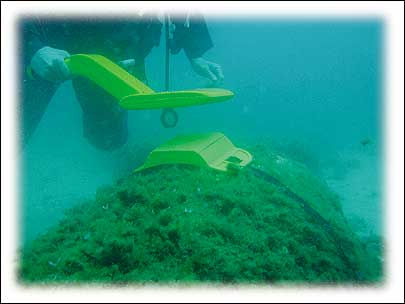Feb 01, 2006Since October, the Gulmar Offshore Group, a pipeline maintenance company, has been attaching Enertag's RFID tags to an underwater oil pipeline in the Persian Gulf. The Pipe Tracking System (PTS) is designed to make it easier to monitor maintenance operations and more accurately pinpoint where repairs are needed.
Divers are using plastic straps to attach 3,000 of the 125 kHz passive tags at 48-meter intervals along the outside of the pipe. The tags use Philips Semiconductors' HITAG chips, which are encased in a plastic housing for protection and to fit the contours of the pipe. Each tag has a unique ID number and 250 kilobits of memory that can store maintenance data. Divers use handheld interrogators to read a tag and to write information to it.

The interrogator uses an underwater cable to communicate with a PC on the support ship. The PC runs an Enertag-developed application that interprets tag data and combines it with existing data for the pipeline in question. The tags will act as milestones, so divers will be able to pinpoint where repairs are needed more quickly.
Enertag guarantees its system for use at depths as great as 300 meters, but says tests show it works at depths of 1,000 meters. PTS should also be useful in maintaining land pipelines. "Enertag wasn't developed just for underwater pipelines, but for any energy pipeline," says Thierry Blanche, vice president of Enertag. "But we wanted to start with the most difficult environment to prove the system."
